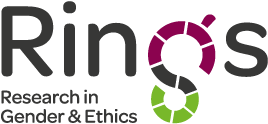Introducing Tani Kassimu: Understanding male involvement in the implementation of maternal and child health care interventions
Tani is a recipient of a RinGs’ small research grant. In this blog post he introduces himself and discusses what led him to develop this study.
Tani Kassimu
Tani Kassimu is a recipient of a RinGs small research grant. He works at Ifakara Health Institute in Tanzania, is part of the Resyst and is working on this project with Fatuma Manzi, August Kuwawenaruwa and Jitihada Baraka. Their project explores male involvement in the National Health Insurance Fund (NHIF/KfW) prepaid insurance card for pregnant women in Pangani District-Tanzania.
I am an economist by training, with both a Bachelor and Master of Arts in Economics from the University of Dar es salaam-Tanzania. I specialize in Environmental and Health Economics. I currently work on a project testing the deployment of paid community health workers (CHWs) in rural health systems in Tanzania, and on a program evaluating the distribution and use of a maternal and child health insurance cards among poor women in rural districts in the country. Within these projects I am responsible for undertaking financial tracking, costing, cost effectiveness, and equity analysis. My interest in gender and gender-related issues has been growing over time. In particular, I am interested in finding out the effect of maternal and child health interventions which incorporate men into traditional female roles.
Within the CHW program, when a village was to have two CHWs, one of the recruitment criteria was to have both a female and male; for a village with only one CHW, a female was usually preferred and recommended by the program. However, during the final selection of CHWs, community members in some villages selected a male rather than a female, as they felt that both are equally capable of engaging in maternal and child health. This made me think about the way program implementers recruit CHWs for maternal and child health problems. Most program designers believe, for example, that program implementation will be improved if female CHWs are used as they will be in a better position to talk to and assist fellow women on issues related to maternal health.
During the evaluation of equity distribution of the maternal and child health insurance program, we found that the program design and implementation involved males. As a result, we felt that it was important to assess male involvement during implementation of the program. We then developed the RinGs project, which intends to explore the differential impact of male involvement, or lack of involvement in access to and use of health care services and decision to re-enrol in the program. In addition, it aims to gather recommendations from study participants, including strategies used, to increase male involvement in the implementation of the program so as to improve future interventions on maternal and child health care. Male involvement within the implementation of the insurance program is important because they are key in decision making on enrolment and premium payment. By better understanding the role of male involvement, we will be able to advise the policy maker and program designer on the best strategy to involve this group of community into maternal, child and family health.
For more information about RinGs visit our website.
